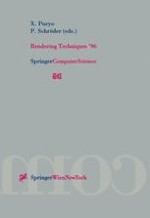27 contributions treat the state of the art in Monte Carlo and Finite Element methods for radiosity and radiance. Further special topics dealt with are the use of image maps to capture light throughout space, complexity, volumetric stochastic descriptions, innovative approaches to sampling and approximation, and system architecture. The Rendering Workshop proceedings are an obligatory piece of literature for all scientists working in the rendering field, but they are also very valuable for the practitioner involved in the implementation of state of the art rendering system certainly influencing the scientific progress in this field.
